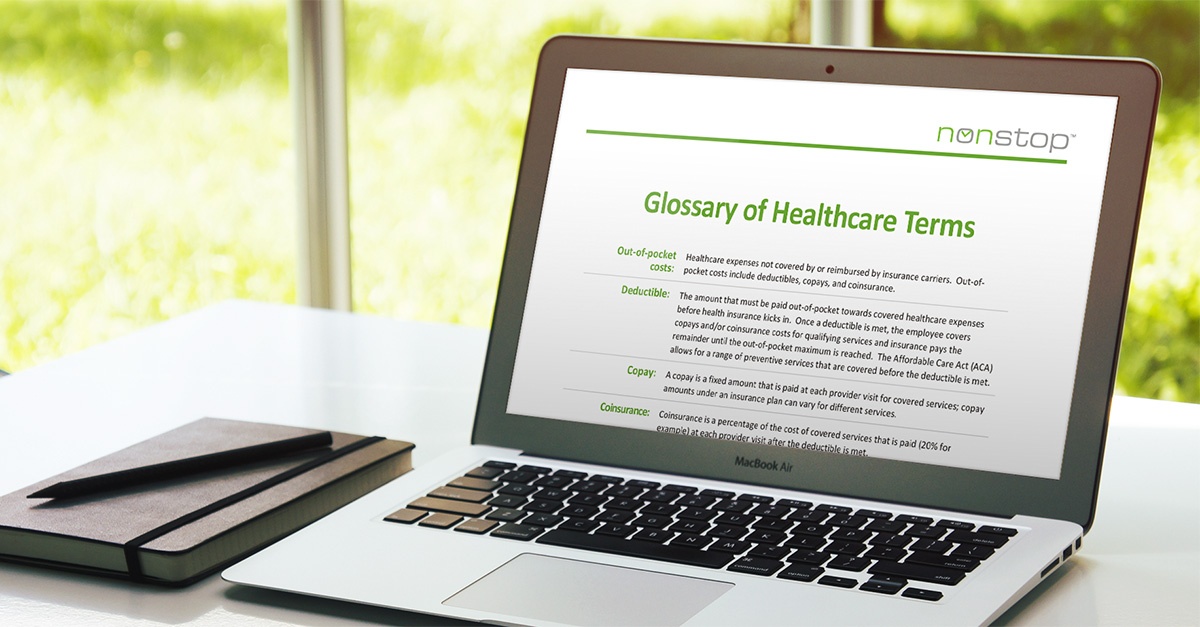Nonstop Presents: Navigating Unemployment Insurance
Essential Unemployment Insurance Insight for Nonprofits with Laura Achee, Enrollment Manager, UST.
Essential Unemployment Insurance Insight for Nonprofits with Laura Achee, Enrollment Manager, UST.

Direction Service is a non-profit organization located in Springfield, OR that specializes in multi-service care for individuals and families dealing with various disabilities. They are a company of roughly 54 employees that has managed to provide care for over 2,000 families in their area.

In today's competitive job market companies can find it hard to afford to retain quality candidates. For nonprofits specifically, this is even more challenging. How can an organization that isn't self-funded offer benefits that will attract and retain highly skilled individuals? The answer to this lies in more substantial employee healthcare.
Recently, we spoke with Mike Wurtsmith about the larger role that nonprofit boards should be playing when it comes to choosing health benefits for their organization’s employees.

Finding talented staff may not be all that difficult. But convincing them to actually work for your organization? That’s a whole different story. Our current job market is constantly evolving, with more niche positions, an emphasis on flexibility, fast paced technology growth, and gig economies on the rise. Those organizations that can shift on a dime most often win the talent pool.

A few years ago, the Journal of Health Economics found that 86 percent of Americans couldn’t define the basic terms associated with their health insurance – deductible, copay, coinsurance, and out-of-pocket maximum. And in 2016, a survey by PolicyGenius found that 96 percent of Americans overestimate their understanding of these terms, with only 4 percent able to define all four of the above concepts. The correlating result? This lack of knowledge or true understanding is likely leading to increased – and possibly unnecessary – healthcare spending.
PSI – shorthand for partial self-insurance– is a highly effective way for nonprofits to provide employees with access to quality, affordable health insurance without eating away at fragile budgets. But many organizations, stuck in the staid method of traditional fully-funded insurance, likely haven’t been exposed to PSI. This could be due to myriad factors, including a lack of willingness on their broker’s part to explore alternatives because of the high commissions earned from some fully funded plans (e.g. lower deductible/higher premium plans).

With new laws around minimum wage being debated across the country, along with new regulations around overtime pay under the FSLA, many nonprofits are feeling the budgetary burn and wondering how to cover all of these costs while still supporting programming and staff development.

December and January mark the time when round-up lists of every sort hit the stands – predictions for the year to come, best of 2015, and what to watch for in 2016. As such, business publications have put out their projections for 2016’s business trends, which have implications for both for-profits and nonprofits alike. Below is a brief round-up of some of the big topics anticipated in the corporate world this year, and how nonprofits can integrate these ideas into the workplace:
Nonstop for Nonprofits program subsidizes the cost for
an exclusive training to elevate board leadership
Non-traditional healthcare broker Nonstop and the Center for Nonprofit Management (CNM) have partnered to offer independent sector organizations in Southern California an in-depth training designed to strengthen executive and board leadership. Through the Nonstop for Nonprofits program, Nonstop has granted $25,000 to CNM to fund the Nonprofit Board Excellence Training – a multi-day workshop that will use collaborative “action-learning” to focus on board leadership and oversight, governance and performance, and financial sustainability and fund development.